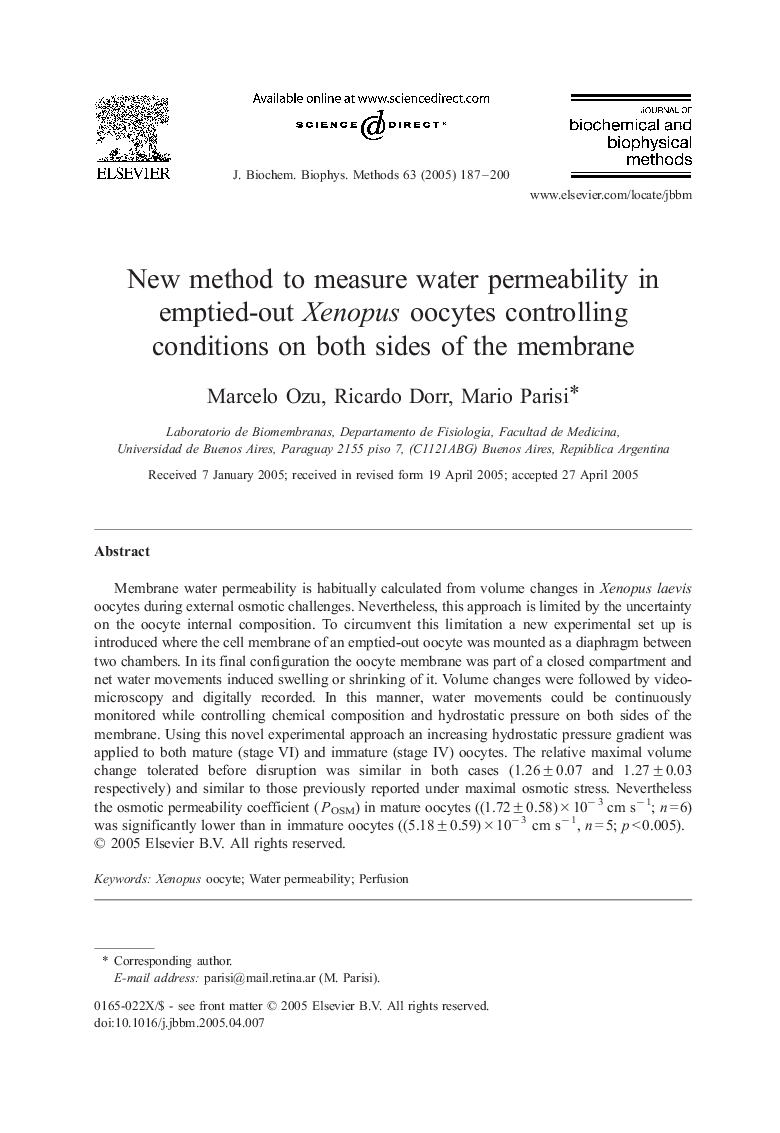| Article ID | Journal | Published Year | Pages | File Type |
|---|---|---|---|---|
| 10825005 | Journal of Biochemical and Biophysical Methods | 2005 | 14 Pages |
Abstract
Membrane water permeability is habitually calculated from volume changes in Xenopus laevis oocytes during external osmotic challenges. Nevertheless, this approach is limited by the uncertainty on the oocyte internal composition. To circumvent this limitation a new experimental set up is introduced where the cell membrane of an emptied-out oocyte was mounted as a diaphragm between two chambers. In its final configuration the oocyte membrane was part of a closed compartment and net water movements induced swelling or shrinking of it. Volume changes were followed by video-microscopy and digitally recorded. In this manner, water movements could be continuously monitored while controlling chemical composition and hydrostatic pressure on both sides of the membrane. Using this novel experimental approach an increasing hydrostatic pressure gradient was applied to both mature (stage VI) and immature (stage IV) oocytes. The relative maximal volume change tolerated before disruption was similar in both cases (1.26 ± 0.07 and 1.27 ± 0.03 respectively) and similar to those previously reported under maximal osmotic stress. Nevertheless the osmotic permeability coefficient (POSM) in mature oocytes ((1.72 ± 0.58) Ã 10â 3 cm sâ 1; n = 6) was significantly lower than in immature oocytes ((5.18 ± 0.59) Ã 10â 3 cm sâ 1, n = 5; p < 0.005).
Related Topics
Life Sciences
Biochemistry, Genetics and Molecular Biology
Biochemistry
Authors
Marcelo Ozu, Ricardo Dorr, Mario Parisi,
